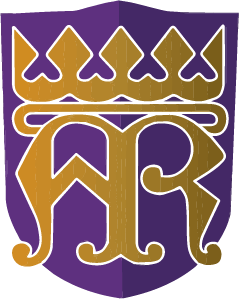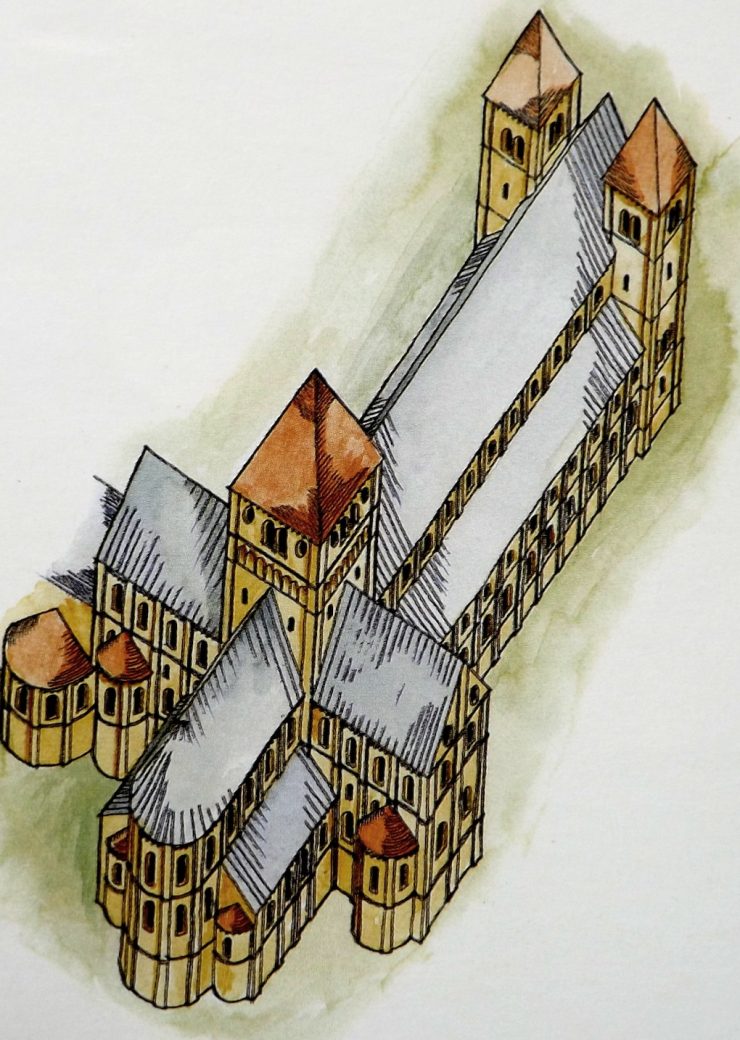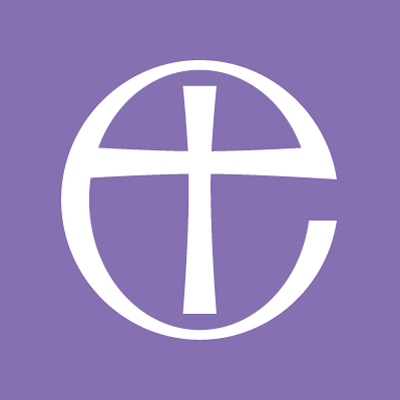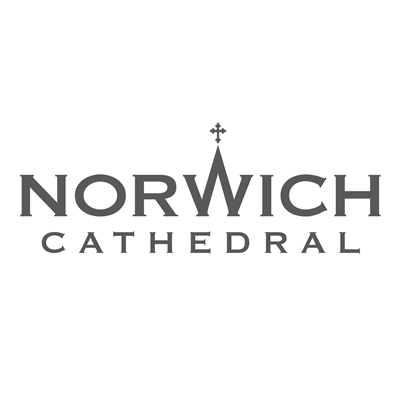About
Wymondham Abbey
Our Purpose
- To worship God
- To share the gospel of Jesus Christ
- To nurture and affirm the people of Wymondham & beyond
- To welcome all who come through our doors
- To celebrate & pass on our rich heritage
Wymondham Abbey is the town’s Anglican Parish Church, dedicated to St Mary and St Thomas of Canterbury. It has been at the heart of Christian worship for over 900 years. Reminding us of Wymondham’s long and illustrious history, the Parish Church continues to be a site of pilgrimage as well as a place of prayer and worship within our community.
The church hosts many events and activities, including concerts, education and learning sessions, meetings and exhibitions. We welcome around 20,000 visitors every year and know that they leave enriched by the experience.
Our Mission
Worship is our primary activity, but as we are called to love and serve God, so we are also called to serve the community in which we are set. To this end the Abbey hosts many community activities including Wymondham Community Help Point and Foodbank, The Abbey Parents/Carers Toddler group, The New Born Club, The “Warm in Wymondham” space and café. All of these seek to show God’s inclusive love for all.
Our Purpose
- To worship God
- To share the gospel of Jesus Christ
- To nurture and affirm the people of Wymondham & beyond
- To welcome all who come through our doors
- To celebrate & pass on our rich heritage
Wymondham Abbey is the town’s Anglican Parish Church, dedicated to St Mary and St Thomas of Canterbury. It has been at the heart of Christian worship for over 900 years. Reminding us of Wymondham’s long and illustrious history, the Parish Church continues to be a site of pilgrimage as well as a place of prayer and worship within our community.
The church hosts many events and activities, including concerts, education and learning sessions, meetings and exhibitions. We welcome around 20,000 visitors every year and know that they leave enriched by the experience.
Our Mission
Worship is our primary activity, but as we are called to love and serve God, so we are also called to serve the community in which we are set. To this end the Abbey hosts many community activities including Wymondham Community Help Point and Foodbank, The Abbey Parents/Carers Toddler group, The New Born Club, The “Warm in Wymondham” space and café. All of these seek to show God’s inclusive love for all.
History
A Brief History
There has been a church on this site for well over 1000 years. In Saxon times, Wymondham probably had a Minster church serving the town and surrounding communities. After the 1066 Norman Conquest, the land passed to the d’Aubigny family from Normandy. In 1107, William d’Aubigny, Chief Butler to King Henry I, founded a Benedictine monastery here as a Priory or ‘daughter house’ of the great St Alban’s Abbey. The church was a grand stone structure shared by the small community of monks and also by the parishioners of the town. This arrangement caused frequent disputes, and in 1249 the Pope ruled that the church should be clearly divided. The eastern half was to be used by the monks. The western half (the building you see today) served as the town’s parish church.
Over the centuries, the church saw many changes. New towers were built, the original Norman nave was raised with a magnificent Angel Roof, and the parish church was enlarged with a wide north aisle in Gothic style.
In 1447, the priory became an independent abbey, one of the richest in Norfolk. But when after King Henry VIII became head of the English church, he closed all monasteries in the land. In 1538, the Wymondham monks surrendered to the king. Their part of the church was taken down, and today only the parish church survives.
Significant changes since then include the enlarging of the south aisle in the 1540s, the installation of the great organ in 1793 and the addition of Sir Ninian Comper’s gilded altar screen as a First World War memorial. The massive west tower now houses a ring of ten bells, the largest of which weighs as much as a family car. In 2015, splendid new rooms were added at the east end to house new displays and facilities.
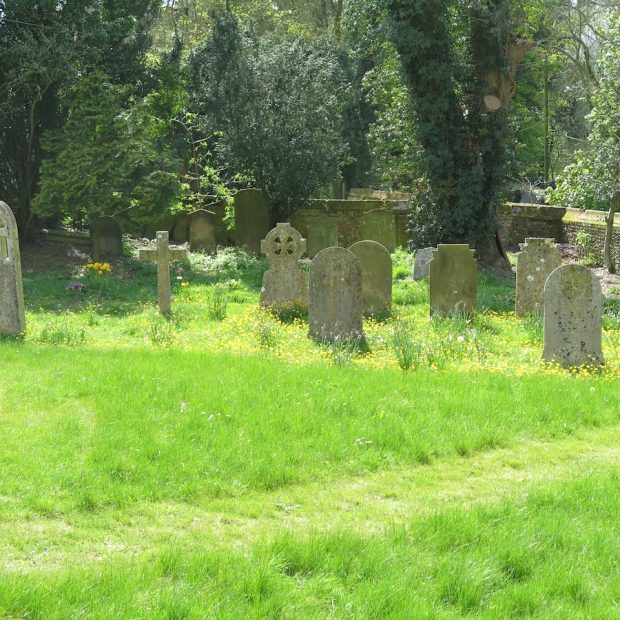
Churchyard
Conservation does not mean neglect and wilderness but sensitive careful management
Churchyards, often predating churches, are some of the last remaining areas of grassland which have never been ploughed or subjected to chemical treatment and serve as vital pockets for wildlife. Inspired by a ‘Cherishing Churchyards’ conference, we have converted part of our churchyard into a conservation area.
Although the Town Council is responsible for grass-cutting the whole churchyard, our Churchyard Team has taken over management of the area to the west of the West Tower. Special wildflower meadow mix seeds have been sown where consecrated soil from the recent building works has been spread. Surrounding this area and also leading off to the Garden of Remembrance are short mown pathways.
Grass around the pathways is cut regularly to a height of 3” -4” so that the many plants already existing there – for instance meadow clary – are allowed to flower.
Our aim is to beautify our churchyard and make it a haven for wildlife and wildflowers for all to enjoy. We have joined the Churchyard Conservation Scheme run by the Norfolk Wildlife Trust (NWT). With the help of Wymondham Nature Group (WyNG) we are doing regular surveys to record the wildlife.
Churchyard
The Medieval Herb Garden management
The medieval herb garden was created in 2015 as part of the Abbey Development Project. George Carter, a leading medieval herb garden designer, was commissioned to design the garden and advise on the herbs which should be planted.
Situated on the south side of the Abbey overlooking the Abbey Meadows, it has four raised beds – Aromatic, Culinary, Industrial and Medicinal. These are filled with herbs the monks would have used. Illustrated signs describe the properties of the plants and their benefits.
The beds are surrounded by breedon gravel paths which are wheelchair friendly and facing them against the Abbey wall is a replica of a medieval bench.
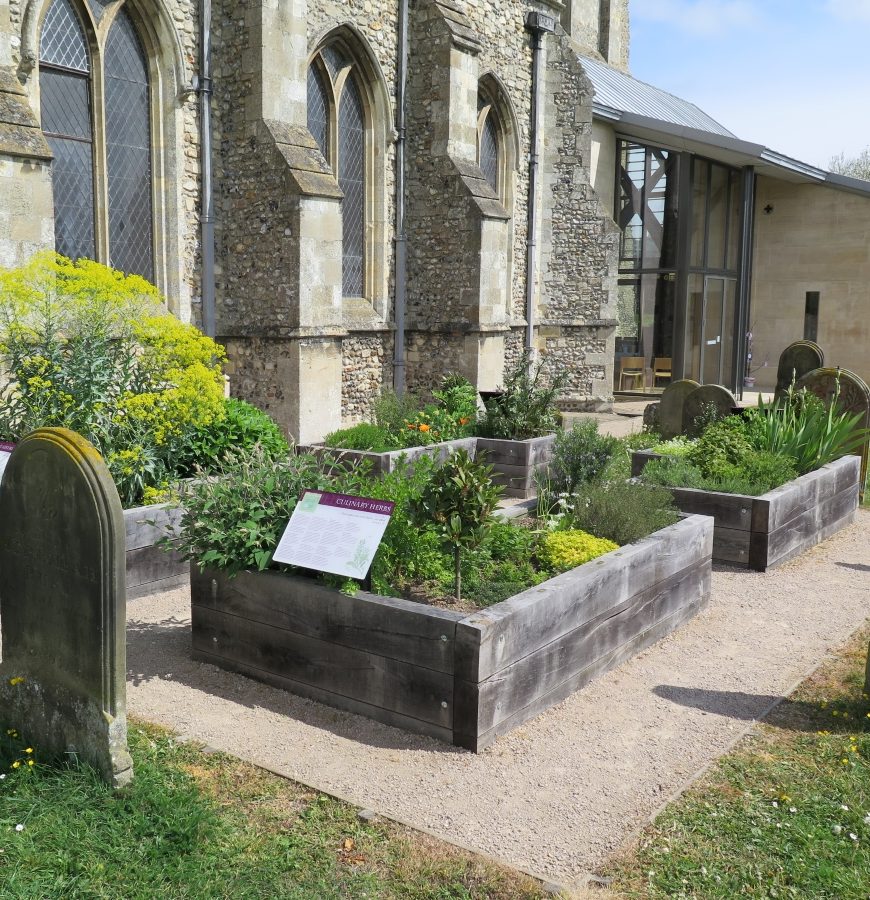
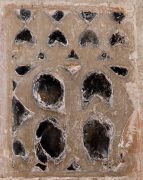
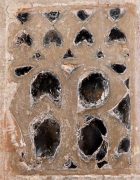
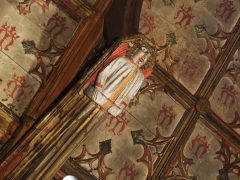
Our Logo
The Maria Monogram Mystery
Our Wymondham Abbey logo shows the letters MR under a crown. This is known as the Maria Monogram and stands for ‘Mary Regina’ (Latin for ‘Mary Queen’). The monogram was widely used in medieval churches, especially those like Wymondham Abbey dedicated to Jesus’s mother Mary, also known as Our Lady. The tradition that Mary was Queen of Heaven goes back to the earliest centuries of the Christian Church and the monogram would have been instantly recognisable to almost everyone.
The title derived in part from the ancient teaching that Mary, at the end of her earthly life, was bodily and spiritually ‘assumed’ into heaven where she is honoured as Queen. The beautiful statue of Mary facing the door is also crowned.
Here at the Abbey the most prominent Marian monogram is set into a stone pillar almost opposite the entrance. The letters are shaped out of pale limestone inset with dark flints. Curiously, it is back to front – a mirror image of the letters. We know that these pillars were squared-off in about 1580, so the MR shape was probably re-used from elsewhere in the former monastery buildings. Was this deliberate, or was the builder just illiterate? We shall never know. However, there are several other MR monograms in the Abbey that are the right way round. There are four MRs above the outer porch door. Over the altar in the Lady Chapel they are stencilled on the ceiling to form a ‘canopy of honour’. Some roof timbers above here also have MR in the spandrels of the arches. Look carefully and you may find similar symbols to ours in many old churches. Perhaps our MR logo isn’t such a mystery after all!

